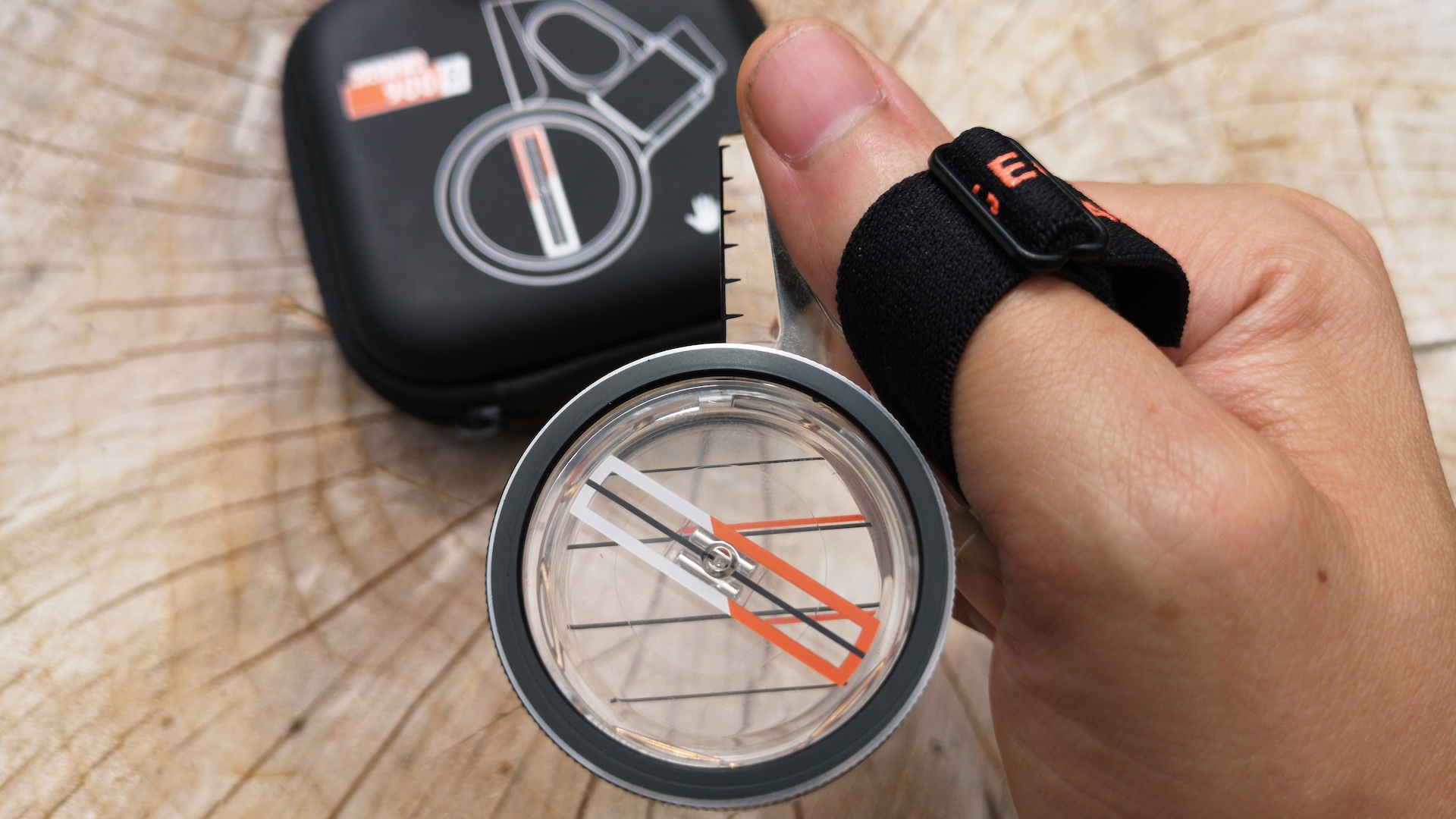Advnture Verdict
A well-priced thumb compass designed for competitive orienteering and adventure racing, the Geonaute Racer 900 is stable, easy to use and holds its own against more expensive rivals.
Pros
- +
Rubberised thumb grip keeps both map and compass firmly in your grasp
- +
Stable needle that settles quickly
- +
Available in both right- and left-handed models
- +
Features rotating bezel with orienting lines
Cons
- -
Thick black bezel can obstruct details when overlaid on a map
- -
Some users may find distance markings superfluous
You can trust Advnture
First impressions
At £35, the Decathlon Geonaute Racer 900 (one of Advnture's best compasses) is at the top end of the compasses tested here. However, compared to other specialist thumb compasses, that price point is extremely competitive – for example, rivals like the Suunto AIM-6 or Silva RaceJet are closer to £60. (Learn more the advantage of a thumb mount in our types of compass guide.)
Uniquely among the compasses we tested, the Racer 900 also comes supplied with a sturdy protective case, ideal for storage and transport. So, it feels like you get plenty for your money.
The compass itself is compact, lightweight and easy to hold, with a familiar and proven design. It’s made of sturdy acrylic with a rubberised, high-friction grip inlay and an adjustable elastic thumb strap to keep it firmly attached to your hand. The capsule has a rotating bezel marked with orienting lines, while the needle is well-balanced and settles quickly – vital when moving quickly over uneven ground.
The plate extends beyond the thumb, with a graduated scale that can be used easily with 1:50k or 1:25k maps (in the first case, each marker would equate to 250m on the ground, in the second, to 125m). This could be useful when racing if you wanted to ascertain the remaining distance to your next attack point or checkpoint, or the end of the leg. The Racer 900 is also available in both right- and left-hand models, depending on which hand you prefer to hold your map and compass in. Discover more about using your compass in conjunction with a map in how to read a map and how to use a compass.
• RRP: £35 (UK)
• Weight: 32g / 1.12oz
In the field
This compass works well when used with an orienteering map, even when moving quickly over difficult terrain. The rubberised high-grip insert under the thumb keeps both map and compass securely locked together, so if you’re thumbing your map with the corner of the extended plate you won’t lose your location.
We found the rubber gripper to be far superior to cut-out designs we’d used in the past, since it doesn’t put your often-rather-sweaty thumb in direct contact with the map. Perhaps most importantly for an orienteering compass though, the needle settles quickly and reliably. It also features diagonal orange markings that align with corresponding orange marks on the orienting lines, which makes finding north and setting your map even easier.
Some might find the distance markings on the plate superfluous, but arguably the fact that they can be used to calculate distances on both 1:50k and 1:25k maps adds considerable versatility.
Of course, you don’t get the other features of a conventional baseplate compass, but then this is a different tool altogether – and a very effective one too. In fact, the only feature that bugged us slightly was the comparatively thick black housing around the bezel, which can sometimes obstruct details when overlaid on an orienteering map.
An outdoors writer and editor, Matt Jones has been testing kit in the field for nearly a decade. Having worked for both the Ramblers and the Scouts, he knows one or two things about walking and camping, and loves all things adventure, particularly long-distance backpacking, wild camping and climbing mountains – especially in Wales. He’s based in Snowdonia and last year thru-hiked the Cambrian Way, which runs for 298 miles from Cardiff to Conwy, with a total ascent of 73,700 feet – that’s nearly 2½ times the height of Everest. Follow Matt on Instagram and Twitter.


